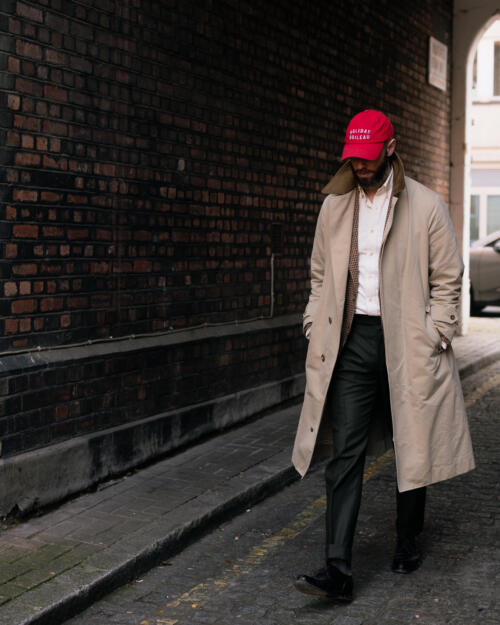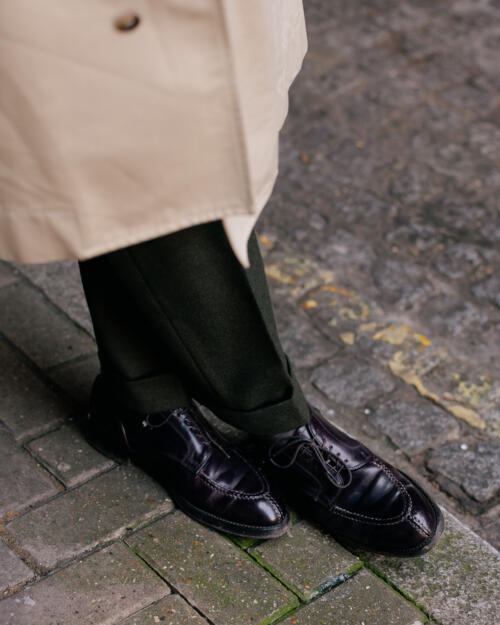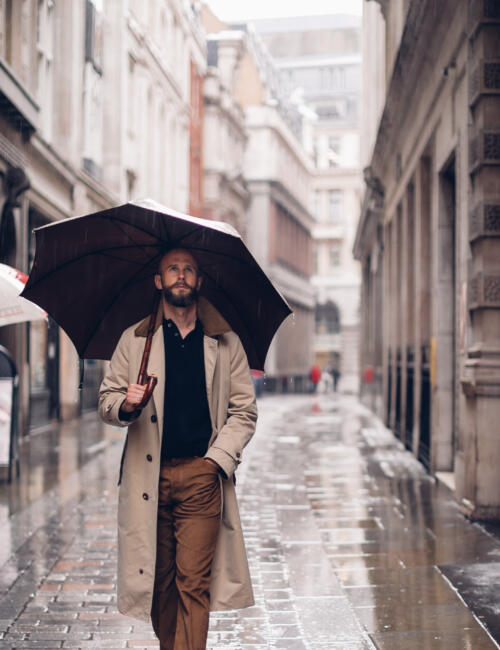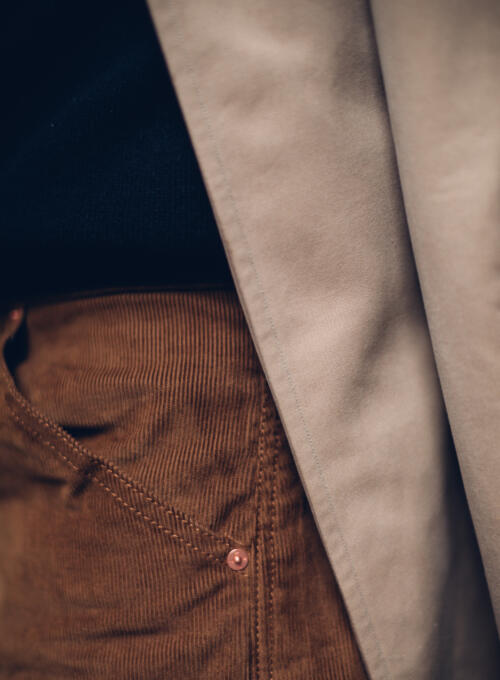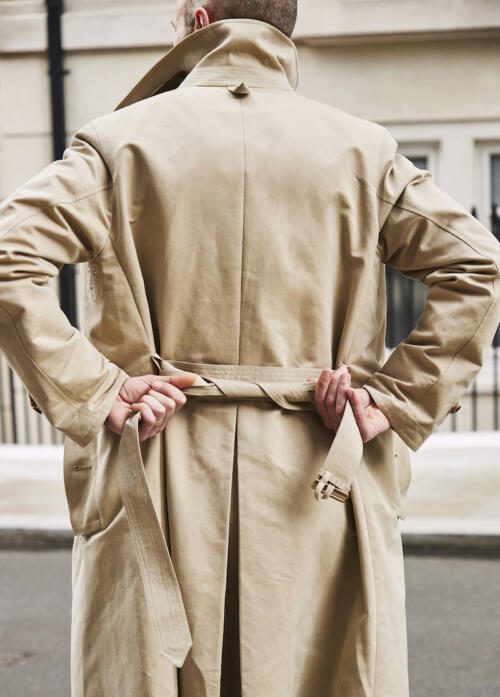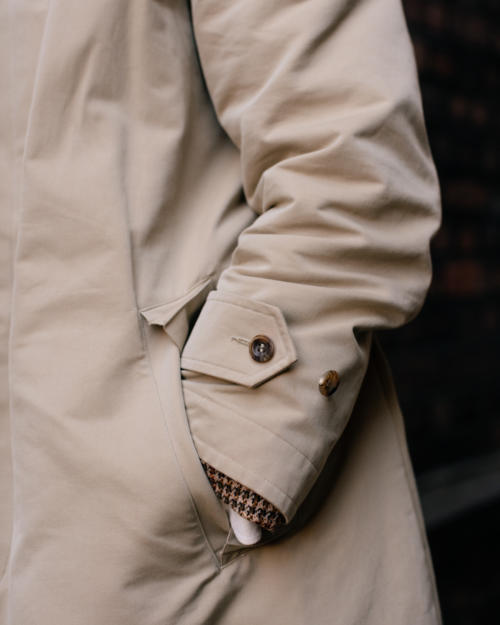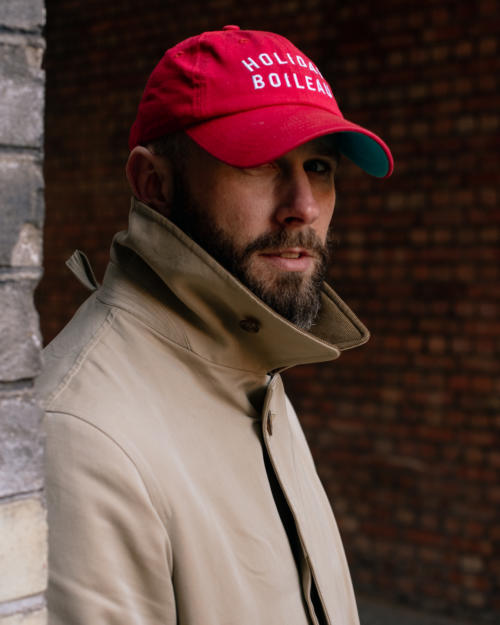The weather definitely turned in London last week. All of a sudden there was knitwear around, and raincoats. The first day it was cold and rainy – Wednesday – we had five questions on different articles asking about the best macs.
Happy to help on other styles, but this is my favourite single-breasted raincoat at the moment, in large part because it has such subtle style. Single-breasted raincoats can look so plain and dull – one reason so many guys look to trenches instead, I suspect – but the Rider’s Raincoat has style in spades.
It’s that wide fly front, which makes a feature of the single-breasted design. The A-line shape that is so effectively cinched by the belt at the back. The thickness of that belt and its dense lines of stitching (which are echoed on the back of the collar).
It looks like a plain mac, but has these details everywhere – the gusseted double pockets, the triple stitching at the shoulder. I can take credit for none of these things of course, as it was designed by Drake’s back in 2017, and even then with inspiration from a vintage cavalryman’s coat.
But it’s lovely to have the power to be able to bring it back, given how much I’ve loved mine. I convinced Drake’s to remake it last year in a new colour – khaki – and this year we’ve brought back the original beige as well. It’s available on the PS Shop now, here.
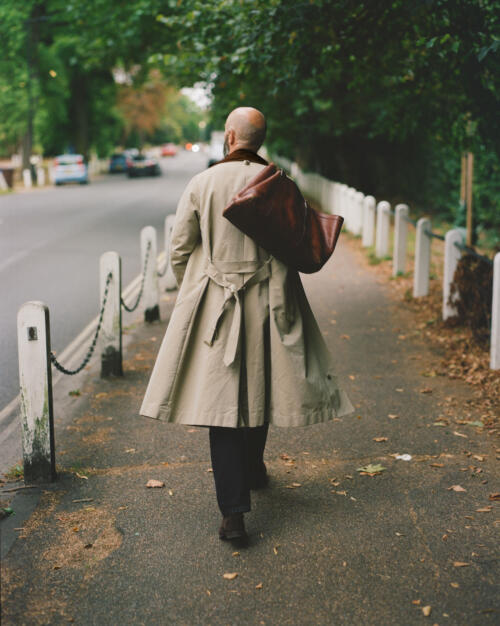
I’ve deliberately been wearing the one pictured for several months. Partly this was to illustrate how it wears in, because the the pure-cotton material is densely woven (in order to be highly water resistant) and that means it’s a bit stiff to start with.
Mine softened quickly and has only got better since, through repeated wears and soaks plus the occasional wipe down when it got muddy. The material is more malleable now but feels dense and strong – ageing in much the same way as a pair of vintage chinos.
The principle of making a coat this way is the same as with the chinos, but that does mean a little more communication is required. Hopefully seeing one worn in helps.
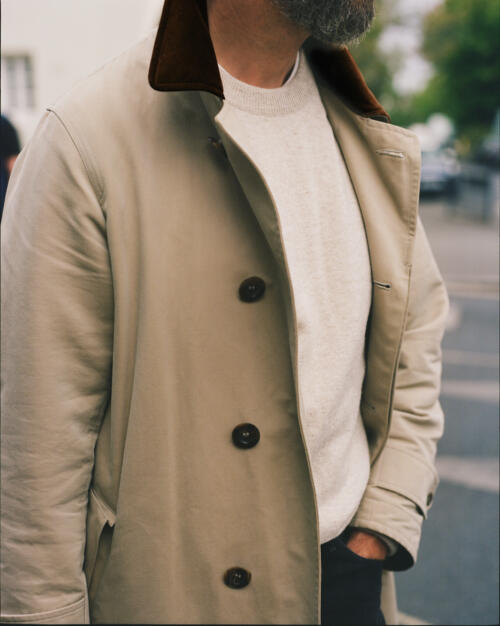
I like wearing the raincoat over a knit or T-shirt, as you feel the material that much more closely. It’s so much nicer than a normal, swishy synthetic. Though I should say I also wear my Coherence coat regularly and that’s a synthetic – in those cases often because I need something thin that can be folded into a bag.
I’ve shown the raincoat here with a white T-shirt and a Rubato crewneck, plus black jeans and brown-suede boots. In the image below the knit is slung around the shoulders, which won’t be a look for everyone (and of course not practical when it’s actually raining). But the point here is that on warmer but wet days, a T-shirt underneath the coat is fine and a knit can be worn or removed as needed.
In places like London at this time of year that’s particularly useful, when it can be eight degrees in the morning but 20 by mid-afternoon, then raining by evening.

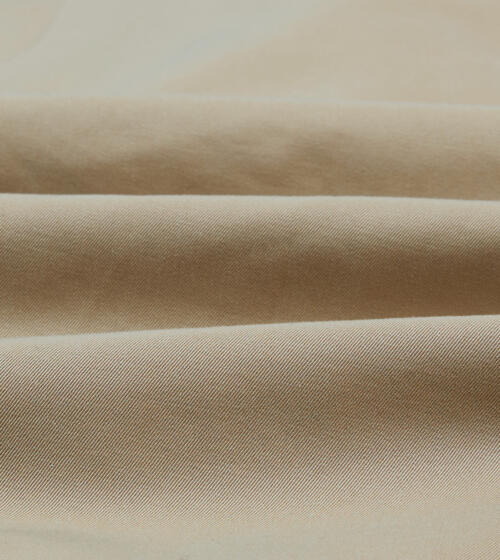
The other reason I wore that outfit was to illustrate how colours like washed black and white work with this version of a traditional beige.
That classic raincoat beige is usually more associated with warmer, rural colours like brown and green, particularly with a corduroy collar. But both the beige and that cord are muted enough that it works with my cold-colour wardrobe as well as business colours like navy and grey.
And of course, if you’d still prefer to avoid the traditional mac look, you can go for the khaki alternative we introduced last year (below). As I showed in the launch article for that, it has a real late-80s Armani vibe, but it too works with a T-shirt and jeans.
I know most readers are looking for just one good mac, particularly given how expensive everything is these days, so these points of versatility are always front of my mind.


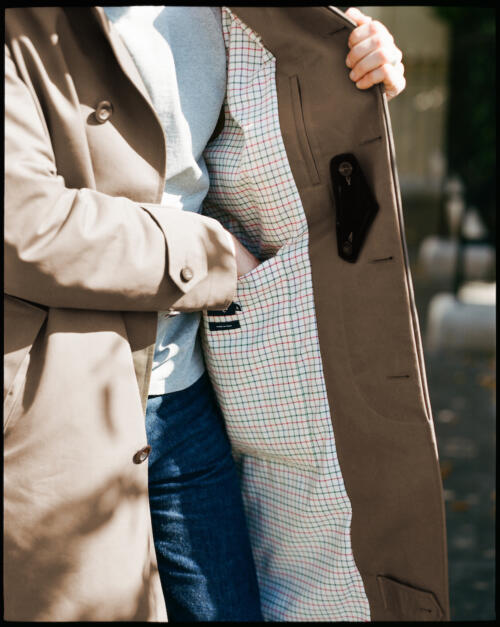
I’ve also included images at the bottom of this article from other shoots with my original coat over the years, to show some other combinations.
You can see warmer colours here – brown cords, green flannels, Colour-8 cordovan. Plus some other levels of formality – a tweed jacket, double-breasted jacket, flannels. It has been shot quite a bit.
The one thing I find I do a little differently now is wear the collar down more. I still love that popped-collar look more, for its drama and old-trench-coat vibes, but the collar looks good down too, particularly with a scarf.

I wrote more in the original launch article about the specific design aspects of this coat, and other functional points. If you want more on those and missed it the first time round, do have a look there.
Some of the points in summary though are:
- The material comes from an Italian mill that specialises in technical outerwear
- It has a similar waterproofing effect to the Ventile, but also has an immersive waterproofing treatment (no spraying, no PFCs)
- The body is quite A-line, but it should be cinched at the back, as shown, to give it shape. This creates a really flattering silhouette
- I wear it mostly either open, or with one or two of the top buttons fastened. Less so the waist button or all the way down
- The overall design reflected one of my favourite periods of Drake’s, when it felt like so many parts of a traditional man’s wardrobe were being made contemporary again: made to be and shown to be relevant.
And functional details:
- The angled hip pockets have a double entry, so you can put your hands in the outer pocket but also reach through to bigger internal pockets
- There’s a phone-sized pocket behind the fly front, like the Wax Walker. So you can more quickly reach a phone or something else.
- We decided not to do a lining with the coat largely on economic grounds. Having one in the old trench coat always made it expensive, and readers said that they’d have preferred to pay for just the coat and make it more affordable.
- The lining is a 100% cotton heavy shirting cloth
- Sold-brass belt buckle, dark-brown horn buttons
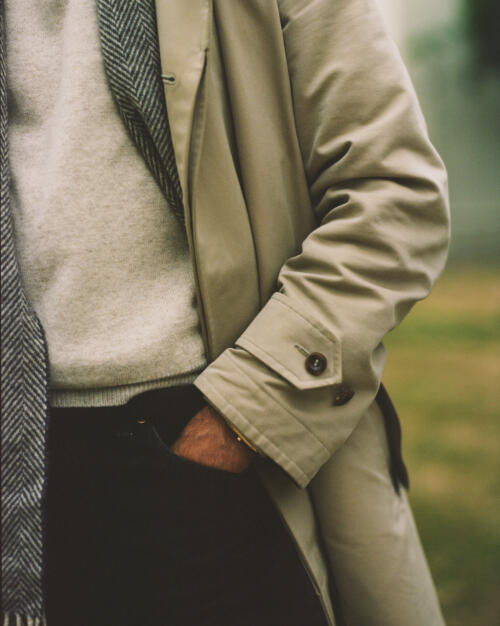
As with the first coat, Drake’s are also stocking it, so it’s available to try on in their stores. Of course, we always appreciate it when people buy from us and we will have it with us when we come to New York for our pop-up in mid-October, and the London pop-up in late October.
The coat is not part of the PS outerwear available to try on at William Crabtree, who are holding try-ons of all other coats through October.
The Rider’s Raincoat costs £995 plus VAT (£1195 in the UK) and is available to buy now on the PS Shop, in sizes XS to XXL.
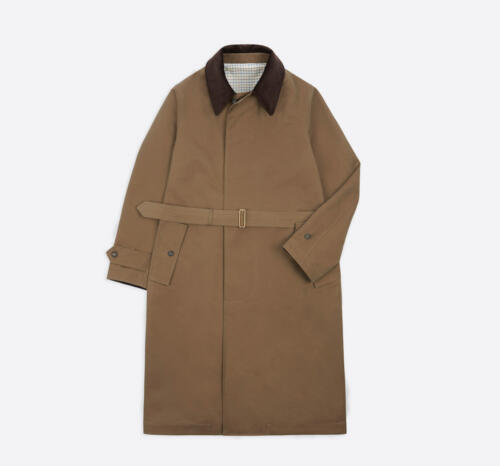
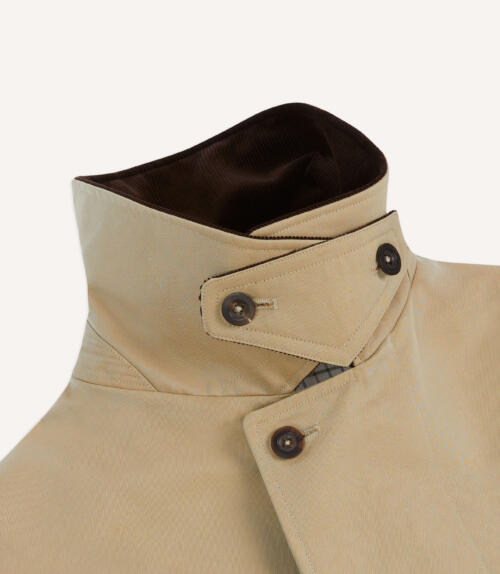
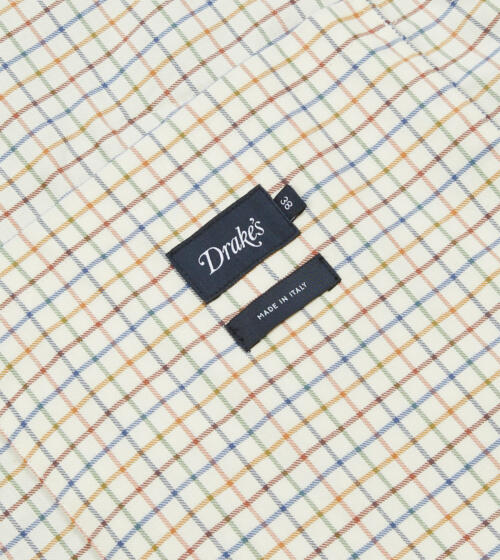

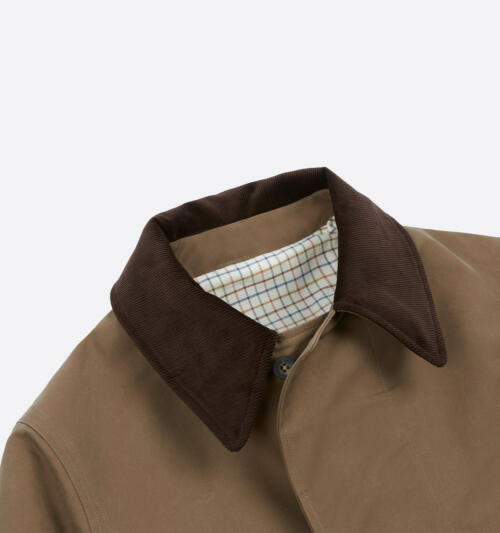
Sizing:
- Simon wears a Medium/38 (UK chest size, 48 European). He is six foot tall with a 39-inch chest
- He could also wear a 40 (it would just be a little more cinched in body)
- We recommend looking at the chest size and comparing to a raincoat you own (more than the shoulders or waist)
Size chart:
| XS (34) | S (36) | M (38) | L (40) | XL (42) | XXL (44) | |
| Chest | 56cm | 58.5 | 61 | 63.5 | 66 | 68.5 |
| Shoulder width | 45.6 | 46.8 | 48 | 49.2 | 50.4 | 51.6 |
| Hem width | 76 | 78.5 | 81 | 83.5 | 86 | 88.5 |
| Centre back length | 116.5 | 117.5 | 118.5 | 119.5 | 120.5 | 121.5 |
| Sleeve length | 63.2 | 64.1 | 65 | 65.9 | 66.8 | 67.7 |
Note: As with most garments, tolerance is around 1cm. Including measurements to the nearest millimetre does not mean greater accuracy
Alterations:
This is not the easiest coat to alter, or one you’d want to change the style of much, but some changes are possible:
- Body can be shortened by a good tailor, but not lengthened (though given the length, hopefully not required by many)
- Sleeves cannot be lengthened, but could be shortened (same restrictions as with other coats with wrist straps: can only shorten a bit or would need to remove strap)
- Body can be slimmed through the side seams, but again wouldn’t recommend as would change the style, and you can cinch as much as you want with the belt
